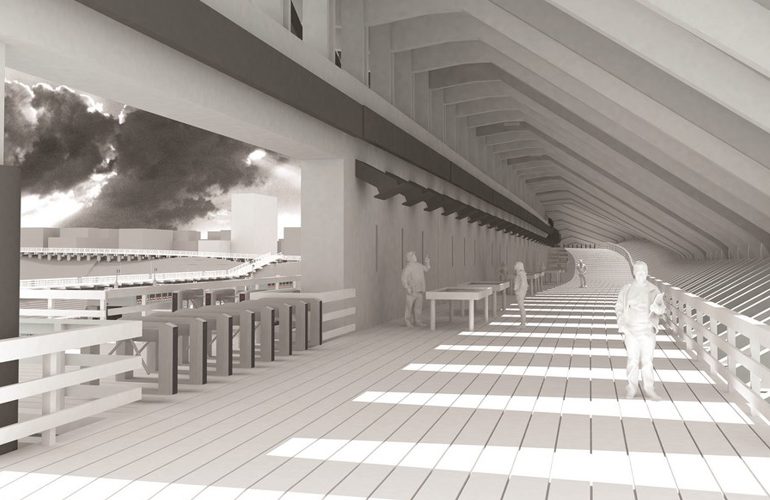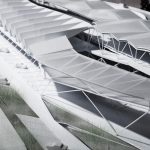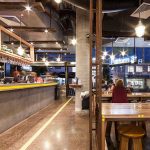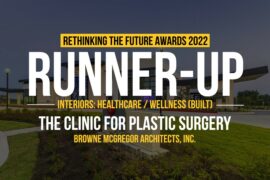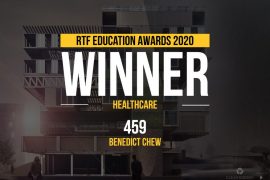Problem: Brooklyn is experiencing drastic change on two fronts-
Urban Scale: Population is growing rapidly in coastal urban areas. To account for the inadequate subway transportation to the site, the emergence of water traffic will become more apparent as population and housing demand increase. The site is situated along the coast of Greenpoint in Brooklyn, an existing pick-up/drop off point for the East River Ferry on India Street. Commuters and tourists alike use this ferry.
Honorable Mention | RTFA 2014 Awards
Category: Institutional Concept
Participant Name: Michael Haddy
Country: United States
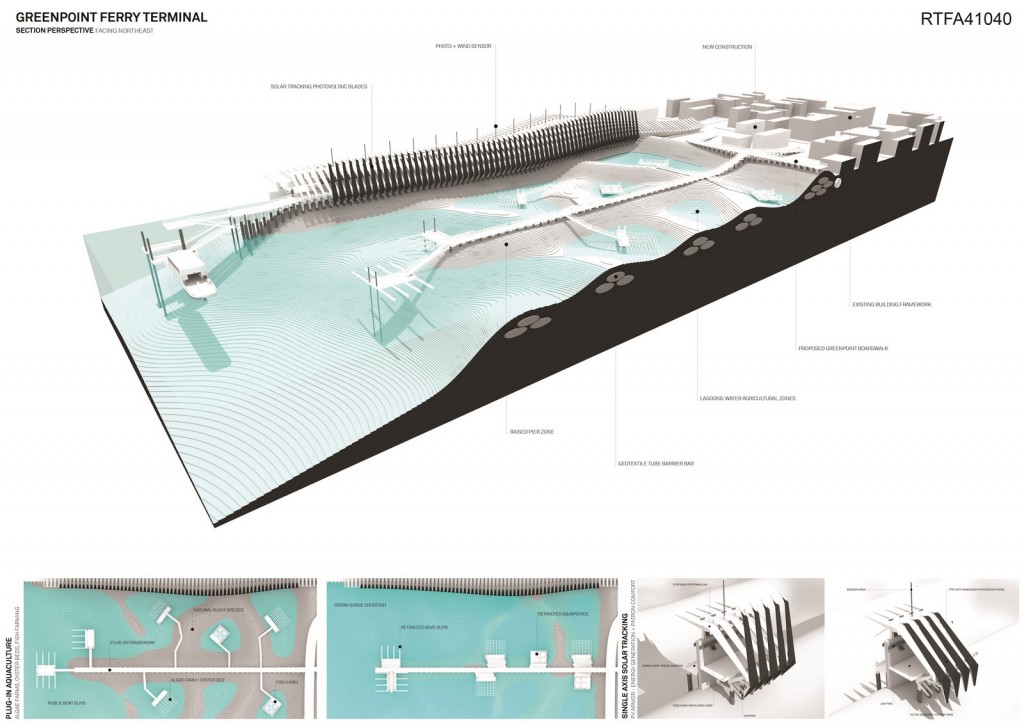
Climactic Scale: The most pressing issue is sea level rise due to global warming. Within Brooklyn, the site is situated in an abandoned industrial district which surrounds dense residential district. The area is in danger of both progressive and sudden sea level rise. The area has already been under water twice in last decade by hurricane Sandy and Irene, leaving most of the buildings abandoned. Additional research reveals that much of this belt will be under water due to sea level rise within the next 100 years.

Theory: The changing climactic and urban concerns will be an opportunity for the building and site systems. With focus on the future condition, census and climactic data were utilized to determine adaptive design principles. This research was applied to create a framework for developing urban harbor conditions that consists of a synergy between NATURAL and TECHNOLOGICALLY driven adaptive elements. A multi-faceted response to changing urban and ecological conditions.
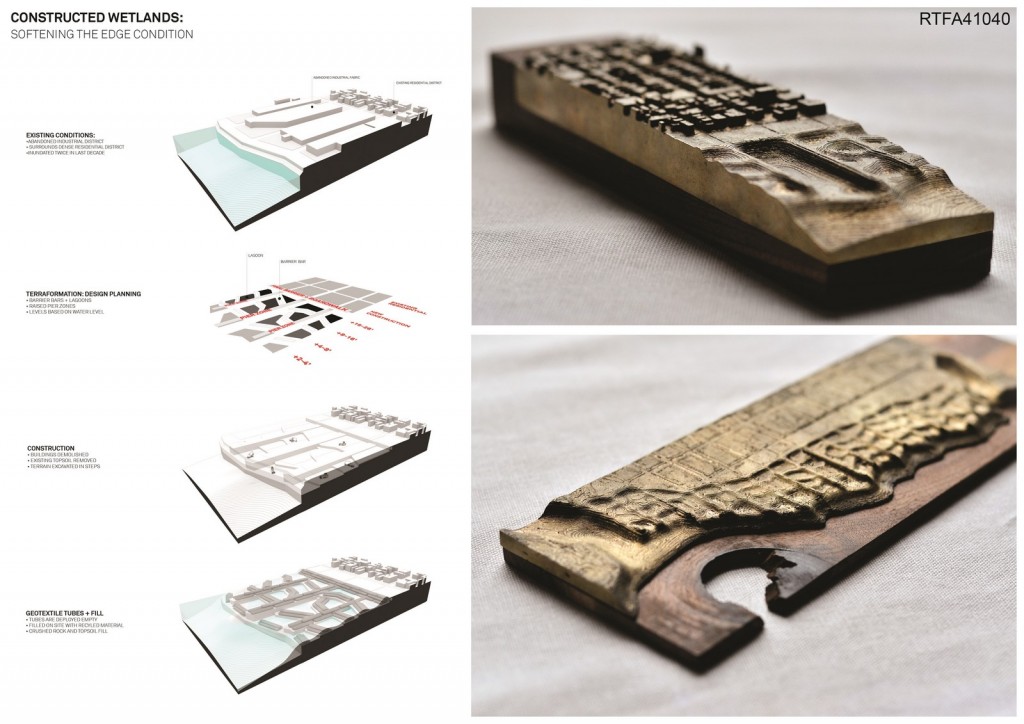
Urban Site Framework: Constructed Wetlands: The baseline urban response is to transform the industrial shoreline into constructed wetland zones consisting of barrier bars and lagoons. Raised sections of landscape are left so that there’s potential for development. The system is designed to adapt to the steadily rising high tide as well as an array of inundation situations. Situated within the landscape is a plug-in aquacultural framework which includes algae farms, oyster beds, and fish farming. This framework allows for expansion as demand rises, allowing the ability for more docking as water level rises.
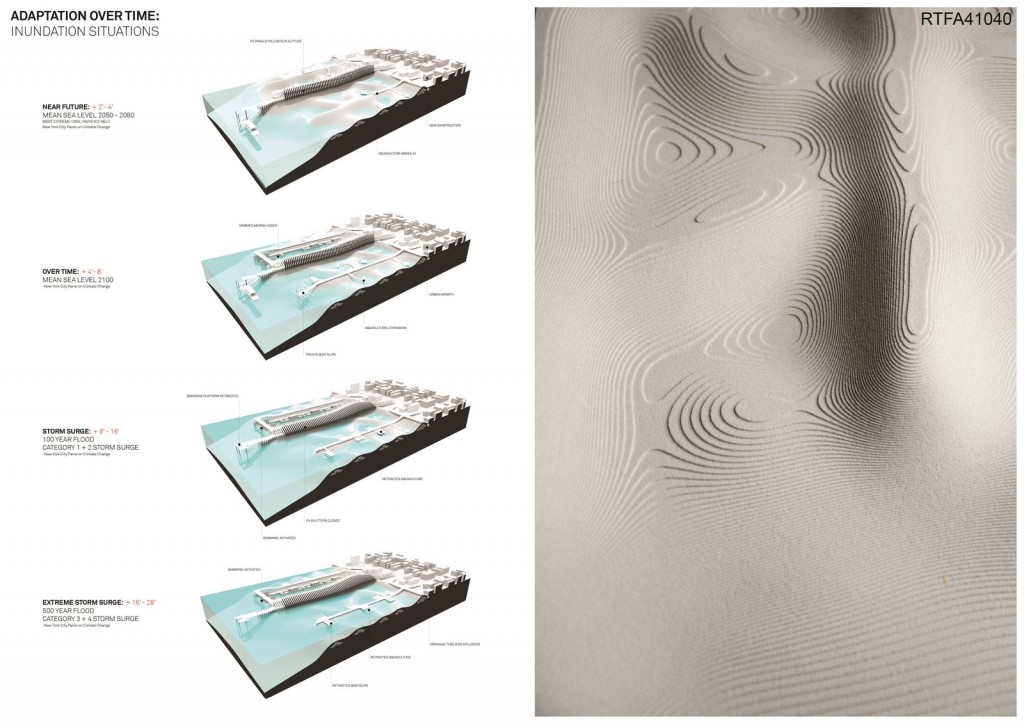
The Building Framework: The ferry terminal is an example of just one type of built intervention that can fit within this new urban framework. A full service station and docking hub for the East River Ferry system that fits within the existing transportation grid. The building is open air, divided into two sides. On the south is active docking where most commuters catch the ferry. On the north side is passive docking along the marina, where special fares and ships dock. Within the active side is a boardwalk culture with integrated food kiosk docking and ventilation. Technologically driven adaptive elements include a damming mechanism protecting the marina from flooding and storm surge, retractable hydrokinetic turbines, and retractable boarding platforms. Additionally, the canopy of the boardwalk structure includes single axis solar tracking Photovoltaic armor which provides energy generation and patron comfort simultaneously. Photovoltaic cells within the PTFE panels follow the suns altitude and responds to a multitude of weather conditions.

